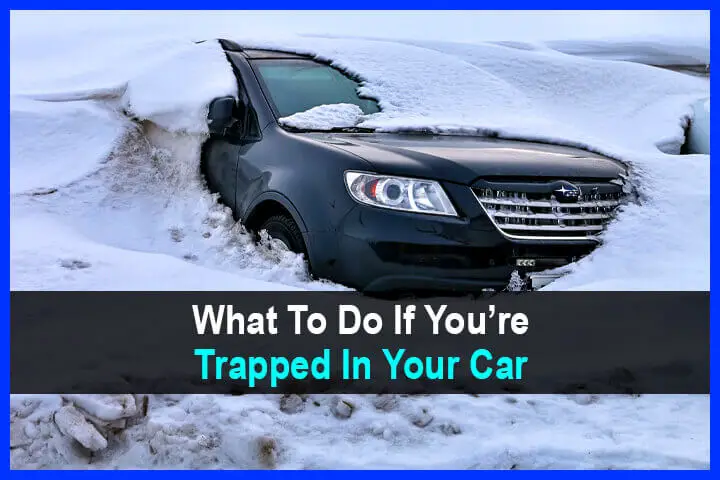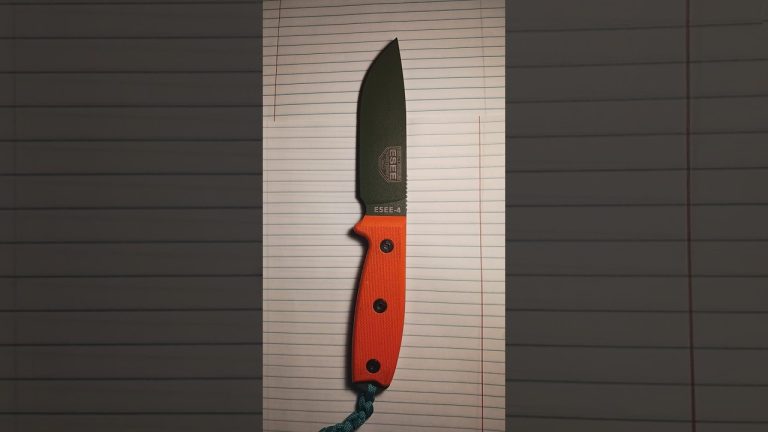Estimated reading time: 9 minutes
Having a vehicle packed up and squared away is usually a part of every prepper’s plan. When the alarms go off, you load your group up and speed away to safety. Or at least that is how bugging out is often portrayed, as some adventurous, possibly off-road, road trip.
Realistically, that is not how bugging out is going to happen. For many people, it’s going to look more like a massive traffic jam when you are going to become stuck in your vehicle for long periods.
Want to save this post for later? Click Here to Pin It On Pinterest!

Most people don’t want to bug out so they will wait until the last possible moment. This and high population areas will result in overcrowded roadways.
But bugging out isn’t the only cause of being trapped in your vehicle. You can also see examples of people being stuck in their vehicles due to mother nature,
In January 2022, a winter storm moved through Virginia, dropping heavy snow and producing thick layers of ice. The storm was much worse than anticipated and a fifty-mile swath of I-95 was shut down after an accident involving six vehicles.

Snow plows and emergency services had such a difficult time accessing the affected area that some motorists were stuck in their vehicles for up to twenty-four hours before the road could be cleared and reopened. In such cold conditions, a situation like that can quickly turn deadly if a person isn’t properly prepared.
Below we have outlined the basics of what to do when you are stuck in your vehicle.
Idling And Fuel

Getting stuck in a serious traffic jam or a weather event could end up lasting much longer than you anticipate and there is the real possibility of running out of fuel. For this reason, it is always a good idea to carry extra fuel with you when possible.
This is quite easy to do with utility-type vehicles like trucks or SUVs where extra fuel cans can be stored in the bed of a truck or tied down to exterior racks. Transporting fuel cans in a car can be a bit trickier because the best way to transport them is on the outside of a vehicle.
Depending on the type of vehicle you have, an exterior rack may be able to be installed, which will provide you with extra storage space and a safe way of storing fuel containers.
Idling a vehicle will continue to use fuel and the longer you idle the more fuel you will use. How much fuel is used depends on the type of vehicle and what accessories are being operated, but some average estimates say around a half gallon of fuel per hour.
For a better idea of how much fuel your vehicle consumes while idling, you can check out a consumption chart provided by the Office of Energy Efficiency and Renewable Energy.
The best thing to do to conserve fuel is to turn the engine off if you expect long periods of not moving. However, in extreme temperature conditions, hot or cold, it’s a good idea to turn the engine back on every so often to help cool down or warm up.
If you are stuck in a vehicle during snowy conditions, an extra safety measure needs to be taken when idling your vehicle. Every so often you should exit your car and check to make sure snow isn’t building up around the tailpipe. A blocked exhaust pipe can cause a buildup of deadly fumes. If snow starts to pile up, simply push it aside.
Staying Warm

Other than running the car’s heater, there are a few ways to stay warmer in a vehicle.
Candles
Believe it or not, burning candles in a small space can help to increase the temperature and keep you a bit warmer. When using any burning heat source, it’s incredibly important to keep a window cracked for airflow and to prevent the buildup of carbon dioxide.
Clothing
If you are not dressed for winter then at least have a set of winter clothes in your vehicle that you can change into.
Blankets
Blankets don’t take up all that much space and having a few of them will help to keep you warm and make you more comfortable. Wool blankets are among the warmest options.
Hand Warmers
There are a variety of hand warmers available, such as battery-operated ones or simple chemical options. Chemical hand warmers are the most affordable, can be left in your vehicle, and you won’t have to worry about battery issues.
Staying Cool

Here are a few ways to help you stay cool if you are unable to run the air conditioning in your vehicle.
Boredom

When all of your needs have been taken care of, i.e. water, food, and temperature regulation, and you are not in any real danger, eventually you will have to contend with boredom.
Everyone’s go-to fix for this problem is their smartphone but that is not recommended because it will drain the phone’s battery. Instead of using your phone, pack at least three to four small items that will help to keep you entertained and your mind busy. Plan entertainment items accordingly based on the age group of your passengers. Examples of items to pack include but are not limited to:
Emergency Kit Checklist

All vehicles should have an emergency kit that includes items for you as well as items that pertain to your car. Below is a list that we have put together but feel free to personalize it and add items as you deem necessary. Let’s start with some essential emergency items for the vehicle.
Tools
Have a few basic tools like a hammer, screwdriver, wrench, pliers, ice scraper, small shovel and any other vehicle-specific tools that you feel comfortable using.
Fluids
Running out of essential fluids is going to make the situation worse. Pack some extra windshield wiper fluid, coolant, and oil.
Extra Fuses
Some simple problems can be fixed by swapping out a bad fuse.
Battery Charger and Cables
When you need a quick boost, a battery jump starter and jumper cables will help out a lot.
Spare Tire
Check on your spare time from time to time to make sure it is in good condition and that you have the tools available for changing a flat.
Gas Can
Some gas stations don’t sell fuel cans anymore, so you can be better prepared by having at least an empty one stored in your vehicle.
Road Flares
A road flare is a great way of signaling for help and in extreme circumstances can be used to start a fire.
Fire
The best way to get a fire going is with matches or a lighter, and some fire tinder.
Space Blanket
Mylar blankets are incredibly efficient at reflecting body heat and they are also insanely compact.
Physical map
Technology can easily fail or run out of batteries. Always have a physical map, like a Road Atlas, in your vehicle.
Flashlight and Batteries
A simple flashlight with some extra batteries will help you to see when it gets dark or can be used as a signaling device.
Blanket and Pillow
A blanket will help to keep you warm and even a small pillow will make sleeping in a vehicle much more comfortable.
Fixed Blade Knife
A quality fixed-blade knife is the most popular tool in any survival kit.
Multitool
A multitool provides an extra cutting blade and an assortment of tools to tackle any situation.
Tarp
A tarp is very versatile and takes up little to no space.
Non-Perishable Food
Pack non-perishable food in your vehicle to keep you from getting too hungry. Items like nuts, trail mixes, jerky, and emergency food are great options.
Water, Water Container, And Filter
It’s a good idea to keep a jug of water in your vehicle, as well as a water bottle, and a water filter.
Entertainment
Pack items that will keep you and your passengers entertained while you are stuck. For ideas on what to pack, check out the entertainment section mentioned earlier in the article.
First Aid and Trauma Kit
Every vehicle should have a first aid kit and a quality trauma kit for those unexpected medical situations.
Power Generation
A small portable solar panel will help to keep small devices charged without having to use your vehicle’s battery.
Duct Tape and Cordage
Duct tape and cordage are so versatile in what they can accomplish that no emergency kit should be without them.
Conclusion
You never know what is around the next bend in the road. It could be a massive traffic jam or an area where you will find yourself stuck for an extended period. No matter the cause of why you become stuck in your vehicle, by having a fully stocked emergency kit, you will be prepared for what the road has to throw at you.
Like this post? Don’t Forget to Pin It On Pinterest!



















